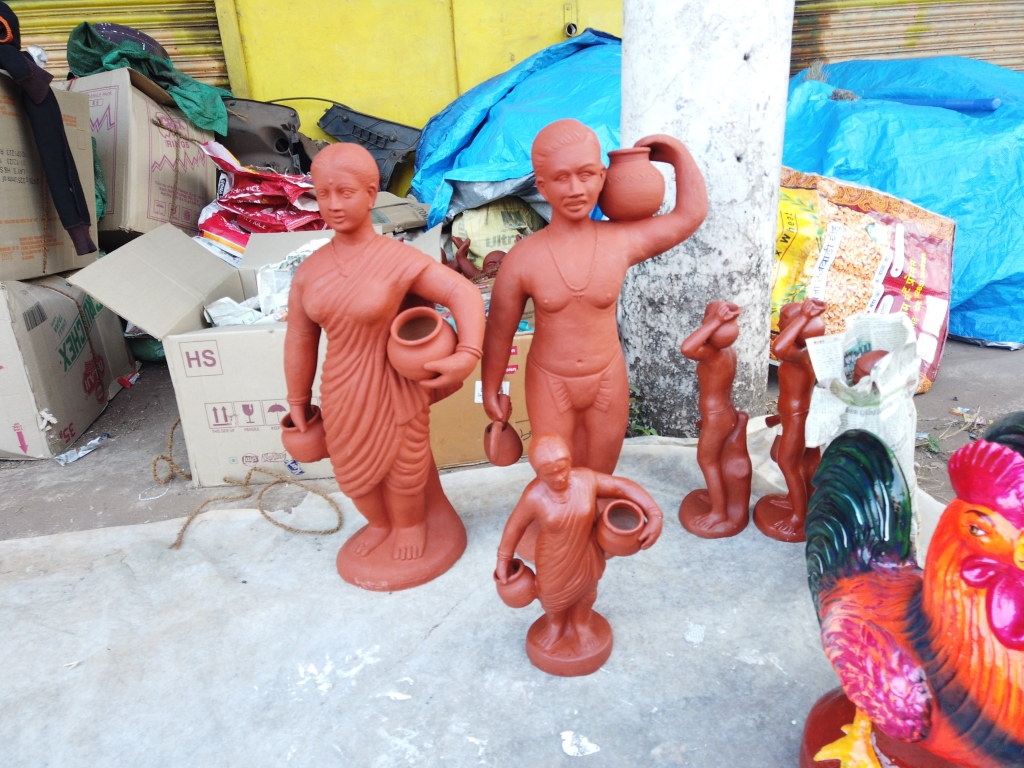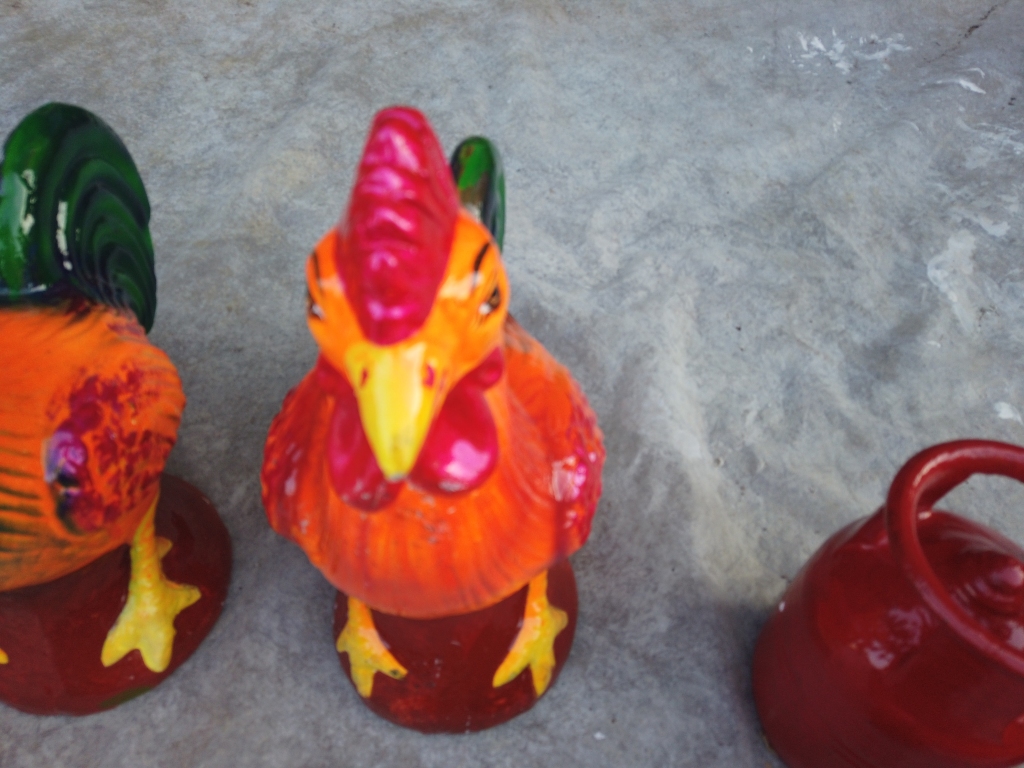








It is yet another hot day of May. Today we have refrigerators; however generations of Goans have grown up quenching their thirst with the cooling effect of the water from the gurguleta. Even today this water cooler with the prout shaped in the form of a cockerel is much in demand. However scant attention is given to the hands that shaped it.
“Since times immemorial, it was the Goan potter or Kumbar who provided the temple with clay lamps and cooking vessels and supplied the eating and drinking vessels for the temple mass meals. Kitchen utensils like the budkulo, modki, cudnem and maitull were important to Goan kitchens.
Potters shape, mould and create – It is the hands of the potter that moulds the clay. Skilled hands also weave baskets from bamboo, make shoes from leather, carve wood into furniture and turn coconut shells into art.
Unfortunately it is these very hands that are not respected.
Potters or kumbars are considered as Goa’s oldest crafts persons and pottery Goa’s oldest craft. Other major art forms include bamboo craft, brass metals, woodcarving, seashell craft, papier-mâché, coconut mask making, jute macramé craft and wooden lacquer ware. As one of the earliest human crafts, the practice of pottery has developed alongside civilization. Pottery has played an important role in studying culture and reconstructing the past of many societies throughout history. In the Indus Valley civilization, pottery products were made in two ways, handmade and wheel made.
There are three main types of pottery: earthenware, stoneware and porcelain. Pottery has however sustained itself through the centuries and is in demand even today.
The Portuguese neither encouraged nor influenced the craft, although glazed wares that date from the seventeenth century or even earlier existed in Portugal. Stone was a more meaningful medium for the perpetuation of the Empire as is witnessed in monuments, churches and statues.
I had once visited Mario Cabral e Sa in Divar as he had researched on the Kumbars. He shared some very interesting ceremonial privileges that this community has retained over the years. At the Kamakshi Temple, in Shiroda, a kumbar, from the nearby Raia village always lights the first lamp on the day of the maha-jatraand his community supplies all the required divas for the day. After this, the then devadasis could claim their right to light the divas and lead the huge procession.
As the story goes, the Kumbars privilege dates from the time that one of their ancestors had saved the deity from the Portuguese. Raia is located across the river from Shiroda. Oral history narrates that when the Kadamba Raja was defeated, the high caste Hindus fled, but one of the kumbars camouflaged himself and stayed back, with the deity cradled in his arms. As per the tradition, a miracle took place and he walked across the river with the deity in the dead of the night which the Portuguese dared not cross.When the Portuguese finally crossed the river and took over Shiroda in the eighteenth century, the kumbars too crossed the river but in the opposite direction and came back to Raia, from where their fore-fathers had once fled. Today they still go from Raia to Shiroda, for the big feast of Goddess Kamakshi. Shiroda became a holy place for the Hindus and Rachol which was then a part of Raia already had the distinction of having the first Church in Salcette and home to the Patriarchal Seminary of Rachol.
Kumbars have saved many other temples in Goa, as claimed by their offsprings. A temple was central to the very existence of their trade.They moulded and baked mud idols and lamps, pots and pans and toys to be sold in the melas and temple fairs which complimented the jatras and palki nights. Hence when the temples faced any danger from the invader, the kumbar never fled –“True to their earth they always remained” according to a verse from the shastras which they fondly quote.
No one knows with any certainty the origins of the Goan Kumbar. Their techniques used suggest a kinship with Maharastrian potters. HA Stuart (Madras Census Report 1891) said that the word Kumbar is derived from the Sanskrit word, kumbhakara, the pot maker. The Catholic Kumbar community is identified from the village of their origin e.g. single wards both in Panzorcone, Cuncolim as well as in Navelim. The Catholic potters who rendered services to the Franciscan friars in Bardez and Jesuits in Salcette had more utilitarian orientation to their craft like making pitchers, flower pots and cooking utensils, while their Hindu counterparts ventured into aesthetics. The potters of Bicholim and Marcela are the creators of the eco- friendly Ganesh Chaturthi idols, the artistic Tulsi-vrindavan and figures of local men and women.
The potters of Bicholim offer works in both terracotta and in ceramic glaze. The clay is found in the fields of Bicholim. The inherent and discernible sculpting skill and talent of these potters was realized by the Portuguese only in the 1940’s, primarily because of the artistic designs of Vishnu Kukklikar, the patriarch among Goan potters. He made statuettes, drawing inspiration from everyday life, pastoral scenes, such as a man husking coconut, a peasant and his plough etc.
Democracy demands an egalitarian society based on merit and hard work. Privileges determined by the accident of birth can have no place either in our small State of Goa or in our great nation. Fortunately the youngsters from this community have recognized the importance of education as a much needed weapon to improve their life and that of the community. These are artisans with unmatched skills and they need support of the government. The Goa Handicrafts and Rural Small Scale Industries Development Corporation has done precious little except help in marketing.
The symbolism of hymns as seen from that quoted above is used in creative literature to discuss the importance of a potter’s skill to mould the clay to the best of his vision and imagination. Hope the Lord moulds us to better human beings who respect each other. Pottery is a great art form. Goa is a cradle of this art, which is now dying as our society has not supported it. It is still considered as menial work. Our craftsmen need the support, respect and encouragement of civil society. A society which has no respect for dignity of labour, has no business to be referred to as a ‘Progressive society’.
Leave a comment